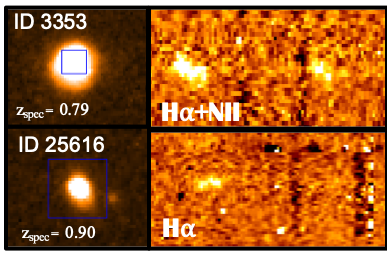The study of distant galaxies is crucial for understanding the reionization process, the formation and evolution of galaxies, and the large-scale structure in the Universe. The lowmass star-forming galaxies (LMSFGs) are the most poorly know galaxies in the Universe due to the difficulty of detecting them. Moreover, their mass assembly is still not well understood and disagreements remain about the period of their dominant star-formation activity.
AIM: Our main goal is to observe a sample of low-mass galaxies at intermediate redshifts (0.7 < z < 1.5) to study their physical properties, the formation redshift and cosmic role of dwarf galaxies.





